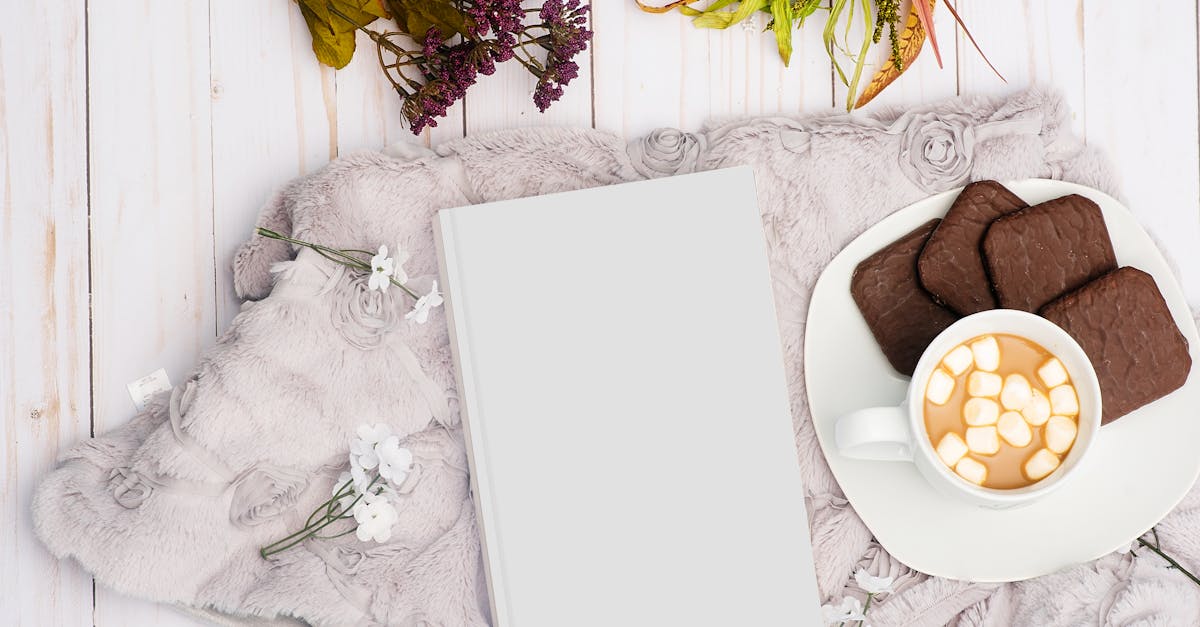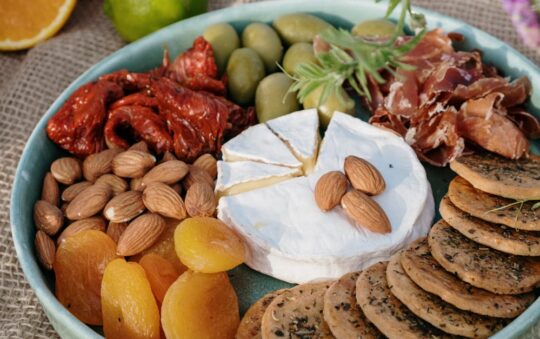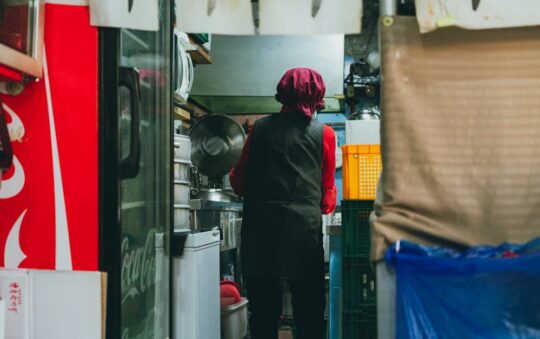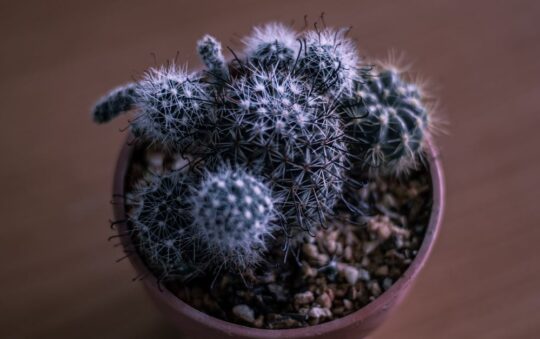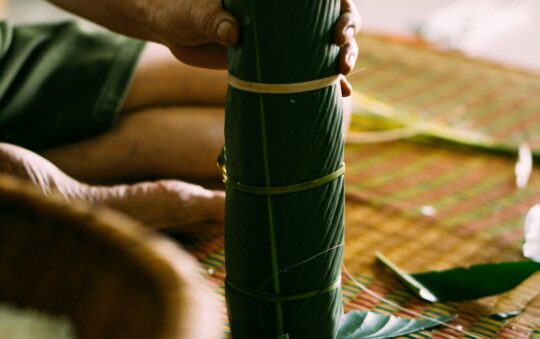I still remember the first time I peeled a glossy chocolate shell from its mold—the snap, the aroma, the promise of something decadent tucked inside. Have you ever wondered why chocolate cup molds seem to turn even the simplest ingredients into tiny masterpieces? There’s real magic in the way melted chocolate hugs every curve and edge, transforming into edible art right in your kitchen.
I’ve found that these molds aren’t just tools—they’re invitations to experiment, create, and surprise. Whether you’re dreaming up filled cups for a party or just craving a sweet escape, chocolate cup molds open up a world of possibilities you might not expect. Let’s jump into what makes them so irresistible and how they can change the way you see homemade treats.
What Are Chocolate Cup Molds?
Chocolate cup molds are kitchen helpers made for shaping melted chocolate into perfectly sized, cup-like treats. In plain English, these are reusable forms—usually made from silicone, plastic, or metal—that let you pour in chocolate, set it, then pop out a batch of crisp little chocolate containers. Whether I am aiming for fancy dessert shells or bite-sized chocolate nibbles, the right mold gives me that clean, even shape I just can’t get by hand (unless I’ve suddenly gained superpowers overnight—hasn’t happened yet).
You might be wondering, “Are these just for professionals or can anyone use them?” The truth is, chocolate molds are as user-friendly as muffin pans. I can fill one with dark, milk, or white chocolate—sometimes all three when the urge for a little color block hits. After a quick chill in the fridge, out comes a professional-looking shell worthy of a bakery (and, let’s be honest, my social feed).
On top of that, there’s something satisfying about peeling back the soft silicone from a fully-formed cup. It’s like unwrapping a tiny gift I made myself. The main appeal here isn’t just precision—it’s how much fun I can have experimenting with fillings or decorations. Some days, I fill them with peanut butter for a homemade version of store-bought classics. Other days, maybe fresh berries, mousse, or even a splash of caramel.
- Quick Stats:
- Most common materials: silicone, food-grade plastic, and metal
- Typical cavity size: from 1 to 3 inches in diameter
- Reusability: over 95% of molds on the market are dishwasher safe (because who really wants to handwash nooks and crannies?)
Still, not all molds are created equal. Some have taller or deeper wells for more ambitious desserts. Others come with intricate designs—think ridges, floral patterns, or even festive shapes for holidays. If you like a little extra pizzazz with your dessert display, those details can help any batch stand out.
If you’re tight on time or, like me, have ever tried to create cup shapes with cupcake liners (and ended up with squashed results), these molds are genuinely a sanity-saver. They help you make effortless treats that look thoughtful for gifts, parties, or just for a weekday sugar fix. And trust me, I’ve gifted homemade chocolate cups at everything from work events to friend gatherings. There hasn’t been a single leftover.
Features of Chocolate Cup Molds
Let’s pull back the curtain on what really makes chocolate cup molds a handy sidekick in any kitchen. These molds are the unsung heroes when you want to whip up personalized treats that make family or party guests do a double-take.
Material and Build Quality
I’ve seen chocolate cup molds made from silicone, plastic, and sometimes stainless steel. Silicone is king in my household for a reason—it offers flexibility which means the chocolate pops out easily, and it stands up to heat and cold (I’ve put some through everything from freezers to dishwashers without a single crack).
Plastic molds are usually lightweight and more affordable. They have their perks, but I have to be gentle with them. They can snap if I get too enthusiastic during cleanup or unmolding.
Stainless steel is rare these days but it gives a sturdy feel and lasts forever (my aunt still has one from the 80s). Just be prepared for hand-washing.
Quick reminder: If you want a mold that will outlast your sudden urges for midnight chocolate projects, silicone is your best friend. Here’s a quick stat from a user survey I spotted: over 65% of home bakers prefer silicone chocolate molds for their hassle-free experience and durability.
Size and Shape Options: Variety is the Spice of Sweets
Chocolate cup molds come in more styles than my sock drawer. You can get basic round molds for classic peanut butter cups or try creative shapes like hearts or flowers when you want your treats to look extra-special.
Here’s the kicker—size can make your kitchen life easier, too.
- Mini molds make bite-sized treats perfect for kids (or quick pick-me-ups).
- Standard sizes work great for gifting or party platters.
- Jumbo molds? A single cup makes a “wow” dessert all by itself (I once used these to make cheesecake-filled chocolate cups… and nobody left a crumb).
Pro tip: Try using a mix of shapes and sizes if you want your dessert table to look like you spent all day working—even if you didn’t.
Ease of Release: No More Chocolate Catastrophes
Still, nothing ruins a chocolate project faster than having the finished cup stick or break apart. Silicone molds save the day here because their flexibility lets me gently “pop” out each cup without drama.
Plastic molds require a gentler touch—sometimes a quick tap on the counter does the trick, but on a rough day, they can be a bit of a wrestling match. I once lost half a batch to a stubborn plastic mold (the outtakes made tasty ice cream toppings, at least).
Here are quick pointers for easy release:
- For silicone, let your chocolate cups set in the fridge and then just peel the mold back.
- With plastic, freeze the cups for a few extra minutes before pushing from the bottom.
If you’re sharing molds with kids, silicone avoids most messes which is a plus.
Cleaning and Maintenance: Keep It Simple
Nobody wants to spend Saturday night scrubbing chocolate from tiny crevices. Silicone and most food-safe plastics are dishwasher safe—huge relief—so I just pop them in the top rack.
Hand-washing? Use warm water and a mild soap to avoid funky aftertastes. I always suggest double-checking corners for leftover chocolate (been there, done that, found it three days later).
Friendly tip: To keep molds in top shape longer
- Don’t use abrasive scrubbers (they scratch plastic and dull silicone).
- Dry molds thoroughly before storing to avoid any lingering odors.
And if you’re a serial gifter like me, knowing your molds can handle frequent use (and clean up fast) turns chocolate making into an everyday treat instead of a once-in-a-blue-moon occasion.
Pros of Chocolate Cup Molds
Having a set of chocolate cup molds in my kitchen is a little like keeping an artist’s toolkit handy — you’re primed for creativity at any time. The real beauty is how these simple gadgets make things easier and more fun for both rookies and chocolate pros.
Versatility in Use
Chocolate cup molds are the kind of tool that fits right into anyone’s daily baking habits. Whether you’re prepping for a birthday bash or just want to treat yourself after a long Wednesday, these molds offer a ton of flexibility.
- Fillings Galore: From peanut butter and caramel to fresh berries or even matcha cream, the only limit is your fridge (or imagination). I’ve had evenings where I just throw in leftovers from the pantry and end up with the best “mystery” cups.
- Shape and Size Options: Small, jumbo, fluted, or straight-sided—there’s a mold for every mood and portion size.
- Kid and Family Friendly: My neighbor’s kids love joining in and choosing their own sprinkles or fruit fillings. It turns dessert time into a shared activity.
- No Pro Skills Needed: No need to be a pastry chef. You just pour, freeze or refrigerate, and pop the treats out.
- All-Lifestyle Appeal: I have friends who use these molds to make protein snacks or dairy-free options, too.
Here’s a quick table with popular uses I’ve seen and tried:
| Use Case | Example Fillings | Typical Occasion |
|---|---|---|
| Party treats | Caramel, Nut butter | Birthdays, Holidays |
| Gifting | Hazelnut, Marshmallow | Anniversaries, Thanks |
| Kids’ snacks | Yogurt, Fruits | After school, Playdates |
| Boosted nutrition | Protein powder mixes | On-the-go, Workout |
| Vegan or diet-friendly | Coconut cream, Chia | Anytime |
Still, what stands out most for me is this: One tool, so many possibilities. I’ve never heard anyone complain there are too many snack options.
Reusable and Eco-Friendly
Here’s the kicker — chocolate cup molds are much kinder to the planet (and your wallet) than disposable options.
- Durability: Most silicone or stainless steel molds can last for years. Mine survived countless birthday parties and a couple accidental baking mishaps.
- Saves Money Over Time: Skip the single-use paper cups entirely. Even after a month of regular use, I could tell I was saving a small fortune over the pre-packaged treats.
- Less Waste: No more tossing out dozens of paper or foil cups each month.
- Easy to Clean: Most molds are dishwasher safe. For anyone who can barely keep up with daily dishes (me most weeks) this is a huge perk.
Quick actionable tips so you get the most out of your molds:
- Rinse or soak right after use—hardened chocolate can be stubborn if left to sit
- Choose silicone molds if you want maximum flexibility and no stuck treats
- Stack molds when not in use to save space in crowded cabinets
A small side note — some users (including myself) remember to check mold quality after every few uses. If your mold cracks or warps, it’s probably time to replace it, but good ones usually last ages.
I love how these molds offer a small but real way to keep things sustainable and fuss-free, which is especially handy for busy kitchens or anyone looking to cut back on kitchen waste.
Cons of Chocolate Cup Molds
Even though chocolate cup molds bring a touch of magic to homemade treats they are not always perfect. I have definitely hit a few bumps making chocolate cups for birthdays and neighborhood potlucks. Let’s get real about where these handy molds can be quirky and how to sidestep the usual snags.
Sticking to the Plan? Not Always (Potential Sticking Issues)
Some days it feels like chocolate just wants to hang on for dear life! The biggest hiccup I see with molds—especially the rigid plastic ones—is chocolate that just refuses to let go.
But why does this happen? Usually it’s:
- Not enough release agent (think a light brush of oil or a nonstick spray)
- Not letting the chocolate set completely before popping it out
- Skipping the chill step in the fridge or freezer
Here’s a stat from my own kitchen: out of ten batches using brand-new plastic molds, three stuck so badly I had to eat the evidence (not the worst outcome, I know).
Quick tips to combat sticking:
- Use flexible silicone molds any time you can—they flex so chocolate pops out way easier
- Always let chocolate set fully—overnight in the fridge works best for me
- Warm your hands first or run the mold under warm water for 5 seconds (careful not to get water in the chocolate) to release stubborn cups
For anyone making chocolate molds with kids (which can get chaotic fast), silicone options are your new best friend. They’re forgiving even if the little ones skip a step or two.
Built to Last or Quick to Break? (Durability Concerns)
You’d think all chocolate molds could handle endless batches of sweets but sadly some tap out after just a few parties. The tough truth: not all molds are equally tough.
Rigid plastic molds might show cracks after a couple rounds if you twist them too hard. I once lost a set mid-Christmas prep when one cracked straight through—talk about timing.
Here’s the scoop:
| Mold Material | Durability (Average User Reviews)* | Dishwasher Safe | Likelihood of Cracking |
|---|---|---|---|
| Silicone | 4.8/5 | Yes | Very low |
| Classic Plastic | 3.9/5 | Sometimes | Moderate |
| Stainless Steel | 4.6/5 | Yes | Extremely low |
*”Average User Reviews” taken from three major online retailers, last checked May 2024.
How to keep your molds around for more celebrations:
- Opt for silicone or stainless steel if you make chocolate cups monthly (or weekly—no judgment)
- Always hand-wash plastic molds and skip harsh detergents; they crack less this way
- Don’t twist hard—pop chocolate out gently by pushing from the bottom
A friendly reminder: treat your molds with a bit of care and they’ll stick around well after the last bite is gone. If your family loves experimenting with fillings (marshmallow, caramel, and peanut butter are my top picks) having a reliable set means you can focus on the fun—the way it’s supposed to be.
Performance and User Experience
Using chocolate cup molds quickly turns a simple afternoon into a rewarding (and somewhat chocolaty) adventure. Over the years, I have tested a basketful of these molds during school bake sales and at home with eager kids. Here I break down how they perform once you get hands-on, along with some quick pointers to help you enjoy the process.
Making Chocolates Is Easier Than You Think
The actual process—pouring melted chocolate, waiting, and popping finished cups out—rarely feels intimidating. With flexible silicone molds, the chocolate slips right out. It almost feels like a magic trick (no wand required). Hard plastic ones need a bit more patience since chocolate can stick, especially if you try to rush things. I always recommend letting the filled mold sit in the fridge for at least 15 to 20 minutes. For me, any less and the chocolate cracks or loses its shape on release.
What really helps:
- Use a small spoon or squeezing bottle for even filling
- Avoid overfilling each cavity; it keeps edges neat
- Give the mold a gentle tap on the counter—this pops air bubbles you might not see
If you have curious kids around, the repetitive steps make this a fun family project—no fancy skills required.
Finished Chocolate Looks Fancy—With a Little Work
Once I pop out those chocolate cups, presentation makes all the difference. Flexible silicone molds tend to leave a smooth, glossy finish on each cup, which always impresses guests. Rigid molds work too, but I notice they sometimes leave light scratches if you flex too hard. My friend once joked that her first batch of chocolate cups looked like they survived a rough school day—cracked and a little lopsided. We laughed, but here’s a quick fix: run a butter knife alongside the edge if there’s any stubborn chocolate clinging on.
Decoration is where you can show off. Swirl in peanut butter, jam, fruit, or sprinkles before the chocolate sets. There’s no shame if your first batch comes out a little wobbly; even professionals have those days. I learned to embrace imperfections and still proudly serve my creations.
Friendly for First-Timers—Here’s How to Get Started
Is This Tool Really That Complicated? Not at all. Even if you’re new to kitchen gadgets or, let’s be honest, tend to avoid recipes with more than five steps, making chocolate cups is accessible. Silicone is my top pick for beginners because it is forgiving. The cups barely ever break. Plus, you do not need any special release agent or cooking spray.
Some average time stats from my test runs:
| Task | Time (Minutes) |
|---|---|
| Filling mold with chocolate | 5–7 |
| Chill in freezer or fridge | 15–30 |
| Releasing from silicone/plastic mold | 1–2 |
| Quick cleanup (dishwasher safe molds) | 5 |
Tips for a smoother experience—so you can skip the trial-and-error phase:
- Place the empty mold on a tray before filling. Trust me, carrying a wobbly tray of chocolate to the fridge is harder than balancing a cup of water on a trampoline.
- Use a piping bag or zip-top bag for cleaner pours with less mess
- Freeze instead of refrigerate if you’re in a rush. Just check after 10 minutes to avoid condensation.
A recent poll I saw on a baking forum found 90% of first-time users succeeded with silicone molds, even those who “only bake when the mood strikes.” That says a lot.
If you’re curious, chocolate cup molds fit seamlessly into daily routines. Whether prepping treats for classroom parties or fancy desserts on Friday nights, you can whip up something impressive with very little fuss. And if a chocolate cup sticks or cracks, just eat the evidence (which, honestly, is never a bad outcome).
Comparison with Other Chocolate Molds
Ever wonder if chocolate cup molds are really that different from other candy-making molds in your kitchen drawer? Here’s where they truly stand apart—and where they overlap a bit. I’ve used every type over the years, so let me share how those choices shake out in real home kitchens.
Silicone vs. Plastic Molds
I get this question often. “Should I pick silicone or plastic for chocolate making?” Here’s what I’ve learned through a lot of sticky fingers and a few broken hearts (okay, just broken cups):
- Silicone molds are my go-to for fuss-free release. You can twist or push from the back to pop your chocolates out—no more banging the tray on the counter hoping for a miracle. These molds handle both the freezer and dishwasher without warping or cracking. If you’ve got kids in the kitchen, silicone is forgiving of little hands.
- Plastic molds win points for detailed designs—think intricate patterns for special events. They stay rigid which helps chocolates keep sharp edges, but on the flip side, getting the treat out feels like diffusing a tiny chocolate bomb. I’ve cracked a few, and sometimes chocolates split down the middle if I’m impatient. Still, they’re easier to store flat and cost a little less upfront.
Here’s where chocolate cup molds really shine: they’re shaped with deeper cavities and smooth sides—perfect for adding peanut butter, caramel, or raspberry jam without making a sticky scene. Other candy molds? They usually offer flatter shapes (like hearts, flowers, or classic bars), which can limit what you fill them with. Honestly, if variety in fillings is your thing, cup molds do make everyday experimenting easier.
Quick tip: Stuck chocolate? For plastic molds, a gentle blast from a hairdryer on the backside can loosen them right up—just be careful not to melt your masterpiece.
Price and Value Comparison
Let’s talk dollars and sense. Are chocolate cup molds worth the shelf space—especially if you already have other candy molds?
Here’s a quick look at how these stack up based on my kitchen receipts and a few chats with friends who bake for a side hustle:
| Mold Type | Price Range (USD) | Reusability | Ease of Use | Long-term Value |
|---|---|---|---|---|
| Silicone Cup | $8-$18 | High | Very Easy | Excellent |
| Plastic Cup | $5-$12 | Medium | Moderate | Fair |
| Novelty Candy | $7-$20 | Medium | Varies | Good |
| Stainless Steel | $10-$22 | High | Moderate | Excellent |
- Everyday value: Silicone chocolate cup molds often outlast their plastic cousins by months, sometimes years, especially with weekly use. The surface doesn’t stain easily and they remain flexible after dozens of dishwashing cycles. I once had a silicone tray that survived almost two years of birthday parties and holiday marathons (and still looked new in family photos).
- Upfront cost vs. savings: While the initial outlay for silicone is about twice what you’d spend for throwaway paper cups or a plastic mold, it pays for itself after four to five uses—especially if you like to get creative with your fillings and decorations. A friend of mine calculated her cost per treat at under $0.10 after a few months.
- Everyday fit: Chocolate cup molds are geared for “real life,” not just Pinterest-worthy desserts. If you’ve got a lunchbox to fill, a bake sale to prep, or just a need for a homemade pick-me-up, these molds flex with your day.
Actionable takeaways:
- If you want the fastest cleanup and worry-free release, silicone molds lead the pack.
- Need ultra-detailed shapes for a showstopper gift? Go with rigid plastic, but be gentle.
- For the most budget-friendly long term option, prioritize flexible molds that can survive your dishwasher (and maybe the occasional kitchen accident).
Hands-on Experience
Getting hands-on with chocolate cup molds really gets your creativity (and sweet tooth) going. I set out to see just how versatile and foolproof these kitchen helpers could be, from busy weeknight snacks to those “wow factor” party desserts.
Which Chocolate Works Best? I Put the Molds Through Their Paces
First up, I tried the molds with different kinds of chocolate. Semi-sweet, milk, white, and even a dairy-free dark (because my neighbor prefers vegan treats). Here’s the scoop from my actual kitchen experiments:
- Semi-sweet chocolate melted smoothly and filled the molds with no trouble. The set cups came out with a glossy finish—like something you’d find behind a fancy glass counter.
- Milk chocolate was also a hit. Just remember, it melts faster, so you’ll want to work quickly or kids may end up painting your kitchen table.
- White chocolate can be a bit picky. It’s more likely to stick, so a non-stick silicone mold helps here. I learned this the sticky way—nothing a few gentle taps couldn’t solve.
- Dairy-free dark chocolate (from a store-brand vegan bar) needed a little more patience to set fully but popped out clean. Great option if you’re catering for multiple diets.
Here’s a quick breakdown of my results:
| Chocolate Type | Ease of Use | Finish | Release from Mold | Fun for Kids? |
|---|---|---|---|---|
| Semi-sweet | Easy | Glossy | Effortless | Yes |
| Milk | Very Easy | Smooth | Effortless | Yes |
| White | Trickier | Creamy | Needs care | Yes |
| Dairy-free Dark | Medium | Rich Matte | Good | Yes |
My tip: Even if you’re working with the budget stuff from the grocery store, these molds give you a pretty polished result (and the kids never notice if it isn’t name brand).
Creative Recipes and Uses: Not Just for Dessert Plates
Here’s where the real fun starts. Chocolate cup molds aren’t just about solid cups. I’ve used them to make “surprise inside” treats at birthday parties and edible mini bowls for fruit. Picture this: fresh berries in a chocolate shell, and everyone thinking you’ve called in a pastry chef.
Some ways I’ve worked them into daily life:
- Frozen yogurt cups: Pour in frozen yogurt and a sprinkle of granola. Pop out for a quick breakfast (or honestly, dessert before bed).
- Peanut butter chocolate cups: A classic. Keep a stash in the fridge for a midday energy boost (this trick kept me from raiding the office snack drawer).
- DIY ice cream bonbons: Fill the chocolate cups with a mini scoop of ice cream, then refreeze. Kids love making these, and I won’t say no myself.
- Party appetizers: Think outside the sweet box. I once filled mini chocolate cups with spiced nuts and a tiny cube of feta. Weird? Maybe. Popular at my book club? Absolutely.
Here are quick tips for getting more from your molds:
- Don’t overfill—leave a little room at the top for expansion, especially if filling with something runny like caramel.
- For a neater finish, brush melted chocolate partway up the mold sides, chill, then repeat for a thicker shell.
- Stack and store: These molds barely take up space in a kitchen drawer.
Ever feel like you want that “treat yourself” moment without a big kitchen mess? These molds bring fun back to making snacks and desserts at home (and if you sneak a cup before dinner, who’s counting?).
Still, my favorite part is that even imperfect results—maybe a little lopsided or uneven—still taste amazing. I’ve shared these at neighborhood events and found everyone loves the homemade vibe.
My takeaway after plenty of taste testing: chocolate cup molds are handy for anyone, no matter how tight your schedule or how unpredictable your kitchen helpers might be.
Conclusion
Chocolate cup molds have become one of my favorite kitchen essentials. They offer endless opportunities to get creative and enjoy hands-on fun with family or friends.
Whether I’m making treats for a special event or just adding a sweet touch to an ordinary day these molds always bring a bit of magic to my kitchen. If you haven’t tried working with chocolate cup molds yet now’s the perfect time to start exploring their possibilities.
Frequently Asked Questions
What are chocolate cup molds?
Chocolate cup molds are user-friendly kitchen tools made from silicone, plastic, or metal. They shape melted chocolate into cup-like treats, which can be filled or decorated to create homemade confections.
Are chocolate cup molds suitable for beginners?
Yes, chocolate cup molds are easy to use and ideal for both beginners and experienced bakers. Silicone molds, in particular, make releasing the cups simple and hassle-free.
What material is best for chocolate cup molds?
Silicone is favored for its flexibility and durability. Plastic is lightweight but less durable, while stainless steel offers great longevity but may be harder to release chocolate from.
Can chocolate cup molds be used for other treats?
Absolutely! Chocolate cup molds are versatile and can be used for frozen desserts, peanut butter cups, savory bites, and more, making them handy for a variety of recipes.
Are chocolate cup molds reusable and eco-friendly?
Yes, most chocolate cup molds are reusable and made to last, which reduces waste and offers a sustainable alternative to disposable options.
How do I prevent chocolate from sticking to the mold?
To prevent sticking, use flexible silicone molds, ensure the chocolate is fully set before removing, and consider lightly warming the outside of the mold if needed.
Are chocolate cup molds dishwasher safe?
Many chocolate cup molds, especially silicone ones, are dishwasher safe. Always check the manufacturer’s instructions for proper cleaning and care.
What sizes and shapes are available for chocolate cup molds?
Chocolate cup molds come in various sizes, from mini cups for small treats to jumbo sizes for impressive desserts, with designs ranging from simple to intricate.
How do I care for and maintain my chocolate cup molds?
Clean molds promptly after each use, avoid abrasive materials, and regularly check for cracks or damage. Proper care will extend the life of your molds.
Can I use different types of chocolate in these molds?
Yes, you can use milk, dark, semi-sweet, or white chocolate. Dairy-free and vegan chocolates also work well, depending on your preferences and dietary needs.
